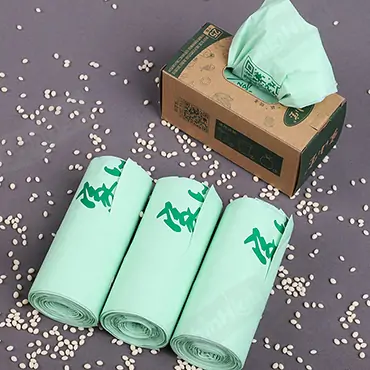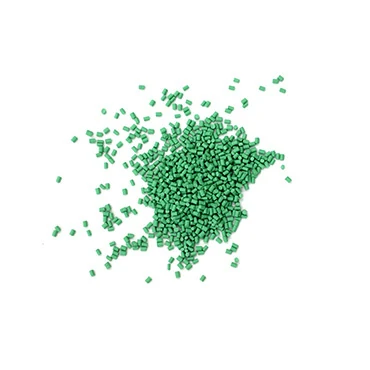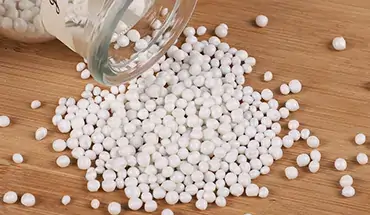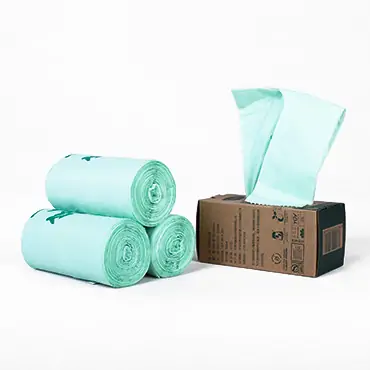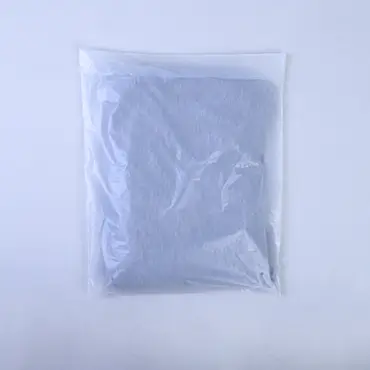Ever found yourself staring at a wall of disposal bags in a store, completely bewildered by the sheer variety? You’re not alone. It’s a jungle out there, and navigating it requires some know-how. But fear not, because this guide is here to break it all down for you, especially if you’re a distributor, supplier, or anyone whose business relies on efficient waste disposal.
Beyond the Bin – Understanding the Versatility of Trash Bags
Let’s be honest, liners for waste aren’t exactly the most glamorous topic. But these unsung heroes of hygiene and organization play a vital role in our daily lives and in countless industries. And here’s a secret: understanding the different types of waste receptacles isn’t just about preventing messy spills. It’s about optimizing your operations, meeting customer needs, and even making a positive impact on the environment.
Why One Size Doesn’t Fit All: The Logic Behind Trash Bag Variety
Think about it: would you use a tiny sandwich bag to haul construction debris? Of course not! The same logic applies to liners. Different tasks, different waste types, and different settings demand different solutions. It’s all about having the right tools for the job. A flimsy bag in a high-traffic area is a recipe for disaster, while an oversized bag for a small office bin is just wasteful.
How Knowing the Difference Can Boost Your Business
Here’s where it gets interesting for you, the business folks. Knowing your waste management products inside and out allows you to:
- Offer tailored solutions to your customers: Become a trusted advisor by guiding them to the right product for their specific needs.
- Optimize your inventory: Stock the right mix of products to meet market demand and avoid dead stock.
- Tap into growing trends: The demand for sustainable options like compostable liners is skyrocketing. Stay ahead of the curve!
- Enhance your own operations: If you use these products in your business (and who doesn’t?), choosing the right ones can improve efficiency and reduce waste.
Trash Bag Sizes and Capacities: A Deep Dive
Let’s start with the basics: size and capacity. This might seem obvious, but it’s a crucial factor that’s often overlooked.
Small Trash Bags: The Unsung Heroes of Everyday Waste
These little guys, typically ranging from 2 to 10 gallons, are perfect for small bins in offices, bathrooms, and under desks. They’re designed for light-duty use, handling paper, tissues, and other small waste items. Don’t underestimate their importance – they keep individual workspaces tidy and contribute to a cleaner overall environment.
Large Trash Bags and Heavy-Duty Liners: Handling the Big Stuff
When you’re dealing with serious volume or heavy, bulky waste, you need the big guns. Large liners, ranging from 12 to 60 gallons or more, are built for demanding situations. Think restaurant kitchens, warehouses, and outdoor events. Heavy-duty liners, often thicker and more puncture-resistant, are essential for construction sites and industrial settings.
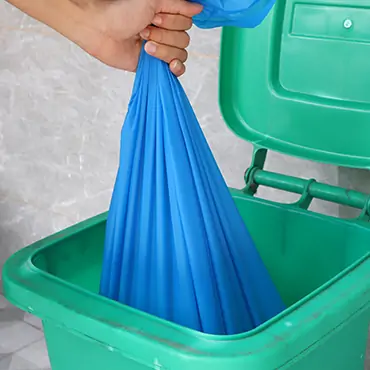
Capacity Considerations: Matching Bag to Bin for Optimal Efficiency
Here’s a pro tip: always match the liner capacity to the bin size. It’s like fitting a square peg in a square hole – it just works better. A snug fit prevents the bag from slipping down into the bin, making it easier to remove and reducing the risk of messy spills.
Finding the Right Size for Every Application: A Distributor’s Checklist
As a distributor or supplier, you need to stock a range of sizes to meet diverse customer needs. Here’s a quick checklist:
- Small bags (2-10 gallons): Offices, restrooms, individual workstations
- Medium bags (12-30 gallons): Kitchens, common areas, small businesses
- Large bags (30-60+ gallons): Restaurants, warehouses, outdoor events, janitorial services
- Heavy-duty liners: Construction, industrial, landscaping
Trash Bags for Every Scenario: A Breakdown by Usage
Beyond size, different liners are designed for specific applications. It’s like having a toolbox filled with specialized tools – each one optimized for a particular task.
Kitchen Trash Bags: Tackling Food Waste with Strength and Durability
The kitchen is a demanding environment for any liner. Food waste can be wet, heavy, and prone to leaks. That’s why kitchen-specific liners are typically made with thicker materials and often feature leak-proof seals. Some even have odor-control properties to keep things smelling fresh.
Why Leak-Proofing is Essential in the Kitchen
Nobody wants a leaky liner, especially in the kitchen. It’s not just messy; it’s unhygienic. A strong, leak-proof bag prevents spills, keeps the bin clean, and makes disposal a much more pleasant experience.
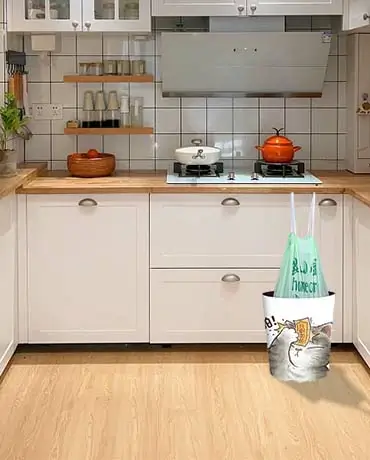
Contractor Bags: The Heavyweights of the Waste World
These are the ultimate heavy-duty liners, built to withstand the toughest conditions. Contractor bags are extra-thick, puncture-resistant, and designed to handle sharp objects, heavy debris, and rough handling. They’re essential for construction sites, renovations, and any situation where durability is paramount.
Specialty Bags: Lawn and Leaf, and Beyond
The world of liners extends beyond the kitchen and the construction site. There are specialized bags for all sorts of needs:
- Lawn and leaf bags: Extra-large and sturdy, designed for yard waste.
- Recycling bags: Often blue or clear, used to separate recyclable materials.
- Medical waste bags: Specially designed and regulated for safe disposal of biohazardous materials.
Meeting Niche Needs: A Profitable Opportunity for Suppliers
Offering a range of specialty bags can be a smart move for suppliers. It allows you to cater to specific customer segments and tap into niche markets.
The Sustainability Shift: Navigating Biodegradable and Compostable Options
This is where things get really interesting, and it’s a major trend that’s reshaping the waste management industry. Consumers and businesses alike are increasingly concerned about the environmental impact of plastic waste, and they’re demanding more sustainable options.
Plastic Trash Bags: Understanding the Environmental Impact
Plastic liners, typically made from polyethylene (PE), are a major contributor to plastic pollution. They can take hundreds of years to decompose in landfills, and they often end up in our oceans, harming marine life.
Biodegradable Trash Bags: Exploring the Options and Limitations
“Biodegradable” sounds good, but it’s a bit of a murky term. Some biodegradable liners are made with additives that help them break down faster under specific conditions, like exposure to sunlight or microorganisms. However, they may still leave behind microplastics, and they often require industrial composting facilities to fully decompose.
Compostable Trash Bags: The Gold Standard for Eco-Conscious Waste Management
Here’s the real deal: compostable liners. These bags are made from plant-based materials, like cornstarch or other renewable resources (PLA, PBAT, PHA, etc.), and they break down completely into compost under the right conditions, leaving no harmful residues behind. They’re the most environmentally friendly option on the market.
Compostable vs. Biodegradable: Clearing Up the Confusion
It’s important to distinguish between “compostable” and “biodegradable.” Compostable bags meet specific standards (like ASTM D6400 or EN 13432) that ensure they decompose within a certain timeframe in a composting environment. Not all biodegradable bags are compostable.
Certification Matters: Ensuring True Compostability
Look for certifications from reputable organizations like the Biodegradable Products Institute (BPI) or TUV Austria to ensure that the compostable products you’re buying or selling are truly compostable.
The Science of Trash Bags: Materials, Thickness, and Seals
Let’s get into the technical details. Understanding the materials, thickness, and sealing mechanisms is essential for choosing the right product and advising your customers.
Resin Rundown: HDPE, LDPE, and the Rise of Bioplastics
Most plastic liners are made from polyethylene (PE), which comes in two main types:
- High-density polyethylene (HDPE): Stronger and more puncture-resistant, but can be crinkly and less tear-resistant.
- Low-density polyethylene (LDPE): More flexible and tear-resistant, but may not be as strong as HDPE.
- Bioplastics, made from renewable resources like cornstarch, are used in compostable products and are gaining popularity.
Thickness Matters: Matching Strength to the Task
Liner thickness is measured in mils (thousandths of an inch). Thicker bags are stronger and more durable, while thinner bags are more economical. Here’s a general guide:
- 0.5-1.0 mil: Light-duty use, like small office bins
- 1.0-2.0 mils: Medium-duty use, like kitchen liners
- 2.0+ mils: Heavy-duty use, like contractor bags
Sealing the Deal: Flat, Gusset, and Star Seals Explained
The way a liner is sealed at the bottom affects its strength, leak resistance, and how well it fits in a bin. Here are the main types:
- Flat seal: The simplest type, where the bag is simply sealed straight across the bottom. Can be prone to leaks if overfilled.
- Gusset seal: The sides of the bag are folded inward (gusseted) before being sealed. This creates a more three-dimensional shape that fits some bins better and offers increased capacity.
- Star seal: Generally considered the strongest and most leak-resistant type. The bottom of the bag is gathered and sealed in a star pattern, which distributes the weight evenly and prevents leaks.
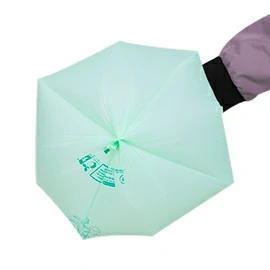
Choosing the Right Seal for Reliability and Performance
For heavy-duty applications or wet waste, a star seal is usually the best choice. Gusset seals are a good option for bulky items or oddly shaped bins. Flat seals are suitable for light-duty use.
Color My World: How Trash Bag Colors Aid in Waste Sorting
You’ve probably noticed that liners come in various colors. It’s not just for aesthetics – colors play a role in waste management:
Green for Organics: Facilitating Composting Programs
Green liners are often used to collect organic waste, like food scraps and yard trimmings, making it easier to separate compostable materials.
Blue for Recycling: Streamlining the Recycling Process
Blue bags are typically designated for recyclable materials, such as paper, plastic, and glass. This helps streamline the recycling process and reduce contamination.
Gray and Black for General Waste: The Catch-All Solution
Gray or black bags are generally used for non-recyclable, non-compostable waste.
Conclusion
From sizes and capacities to materials and sustainability, the world of waste management products is surprisingly complex. But by understanding these nuances, you can become a true expert, offering your customers the best solutions and staying ahead of the curve in a rapidly evolving market.
The Future of Trash Bags: Innovation and Sustainability Trends
The waste management product industry is constantly innovating. Expect to see more advancements in bioplastics, compostability, and even smart liners that can monitor fill levels and optimize collection routes.
How a Knowledgeable Supplier Can Become Your Strategic Partner
As a distributor, supplier, or waste management professional, partnering with a reputable manufacturer is crucial. Look for a supplier who offers a wide range of high-quality products, including sustainable options like compostable liners, and who can provide expert advice and support. A knowledgeable supplier(like ShinHigh Bio) can be more than just a vendor – they can be your strategic partner in navigating the complex world of waste management.
By staying informed, embracing innovation, and building strong relationships, you can thrive in the ever-evolving waste management product market. After all, even the humble liner plays a vital role in keeping our world clean, efficient, and sustainable.

